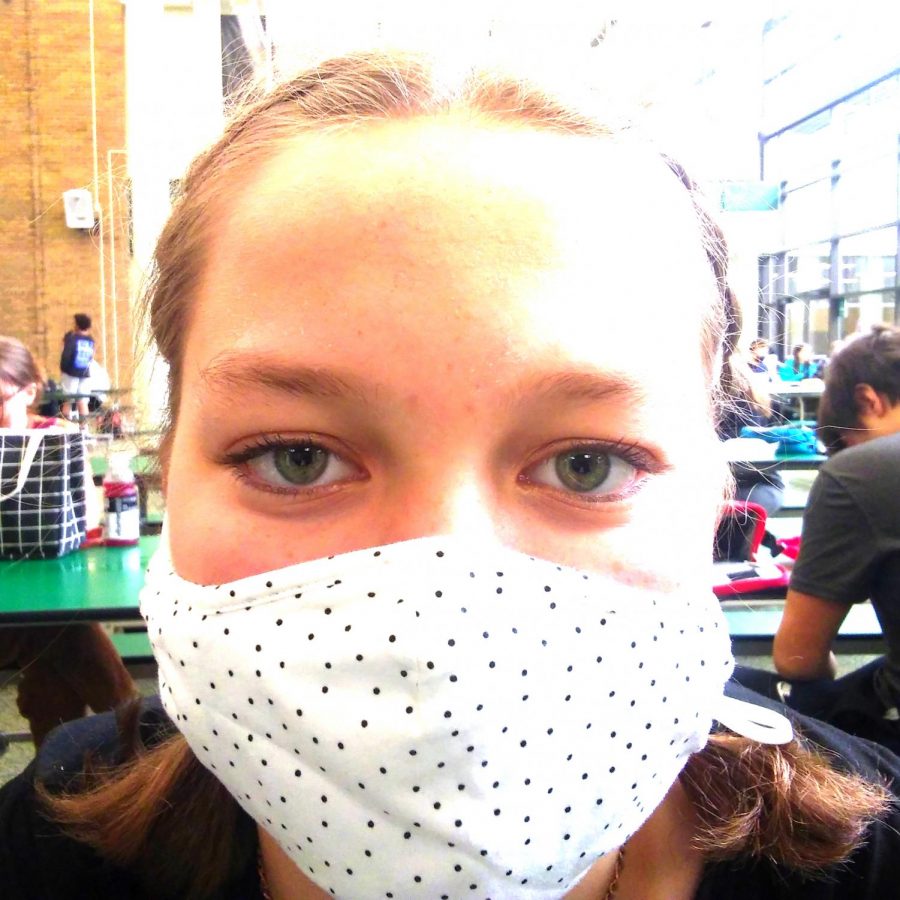Your donation will support the student journalists of Sycamore High School. Your contribution will allow us to purchase equipment and cover our annual website hosting costs.
Masked Emotions
How masks affect our nonverbal communication
March 29, 2021
MASKED EMOTIONS. William Shakespeare once said that “the eyes are the window to the soul”, something that has only become more clear in the past year as masks have left our eyes as our main facial features. Centuries after Shakespeare’s time, modern studies have indeed shown that the eyes do reveal more than what is perceived through speech alone. So how have eyes becoming our most visible feature affected our nonverbal communication? Above, Claire Dippold, 9. Photo via Cassidy Tyler
William Shakespeare once said that “the eyes are the window to the soul”, something that has only become more clear in the past year as masks have left our eyes as our main facial features. Centuries after Shakespeare’s time, modern studies have indeed shown that the eyes do reveal more than what is perceived through speech alone. So how have eyes becoming our most visible feature affected our nonverbal communication?
Long before the age of masks, one’s eyes held clues to people’s genuine emotions. Dr. David Ludden, author and psychology professor at Georgia Gwinnett College, explained in an article that eyes play a bigger role than you might think in conversation. “When people are sad or worried, they furrow their brow, which makes the eyes look smaller. Yet when people are cheerful, we correctly call them ‘bright-eyed.’ That’s because people raise their eyebrows when they’re happy, making the eyes look bigger and brighter” said Ludden.
Given that everyone knows that eyes communicate a lot you would think that the transition from no masks to masks would be easy. However, what some have failed to account for is that much of our nonverbal communication comes from the mouth area. The ability to gauge someone’s emotions using only a third of their face is quite the adjustment from paying attention to all of their faces.
Part of what has made the transition so strange is that many do not realize how much they subconsciously pay attention to another person’s eyes and how they have to continuously think about it now. Tess Rosen, SHS Communications and English teacher explained that “I think that when you are searching for how someone feels, you are searching for their eyes. You are trying to look at them square in the face to see what their reactions are… we just may not be aware of it”.
There are several things that can make facial expressions more obvious even while wearing a mask. One of the main ways to compensate is to emphasize the upper part of the face like the eyebrows and eyes. Paying attention to others’ visible facial features can lead to more engagement in conversation and less room for misunderstandings. Another way is to speak louder and slower during interpersonal communication, as this will make it much easier for people to understand the tone of what is being said.
Masks have posed a communication barrier since the beginning of the pandemic, from muffling voices to disguising facial expressions. Many are still adapting and learning how to communicate as best as possible while keeping themselves and others safe, and some are still struggling to communicate their feelings clearly with their peers. So the next time you speak to someone, try to notice the nonverbal facial cues they use. It might just help you better understand the emotions behind their mask.
